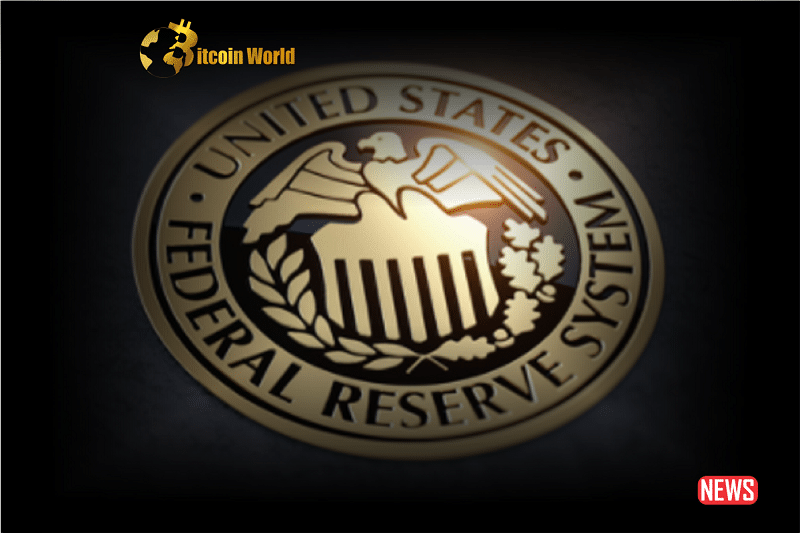Are you keeping an eye on the crypto world? If so, you’ve probably heard about stablecoins like USDT and USDC. They’re designed to be the steady Eddies of the crypto market, pegged to traditional currencies like the US dollar. But here’s the twist: a top official at the US Federal Reserve, Michael Barr, is raising some serious eyebrows about these digital assets. He’s suggesting that if we’re not careful, these stablecoins could actually challenge the US dollar’s reign as the world’s go-to currency. Let’s dive into what’s causing this concern and what it could mean for the future of finance.
Why is the Federal Reserve Worried About Stablecoins?
Michael Barr, the Fed’s vice chair for supervision, didn’t mince words at a recent fintech conference in Philadelphia. He highlighted that the increasing popularity of stablecoins presents some real “significant risks.” What kind of risks are we talking about?
- Financial Stability: Unregulated stablecoins could introduce instability into the broader financial system. Think of it like this: if a major stablecoin were to suddenly collapse, it could send shockwaves through the crypto market and potentially beyond.
- Monetary Policy: The Federal Reserve uses monetary policy to manage inflation and keep the economy on track. If stablecoins become too widespread and operate outside of regulatory frameworks, it could complicate the Fed’s job.
- US Payments System: The US payment system is currently built around the dollar. If stablecoins gain widespread adoption as a medium of exchange, it could disrupt the existing payment infrastructure and potentially weaken the dollar’s role.
To understand the scale of this, let’s look at two of the biggest players in the stablecoin game: USDT (Tether) and USDC (USD Coin).
USDT and USDC: Stablecoin Giants Under the Microscope
Stablecoins have become essential to the crypto ecosystem since they first appeared in 2014. They offer a bridge between the volatile world of cryptocurrencies and the stability of traditional currencies. Among these, USDT and USDC stand out.
USDT (Tether): The Reigning King
Issued by Tether Holdings, USDT is a behemoth in the stablecoin world. Check out these numbers:
- Market Cap: Over $83 billion (and counting!).
- Cryptocurrency Ranking: Third largest overall, only behind Bitcoin and Ethereum – the crypto titans.
USDT’s massive market cap shows just how much it’s used in crypto trading and transactions. It’s the go-to stablecoin for many.
USDC (USD Coin): The Strong Contender
USDC, managed by Circle, is another major stablecoin. It’s faced some challenges, like a temporary dip after the Silicon Valley Bank (SVB) situation, but it’s still a powerhouse:
- Second Most Valuable Stablecoin: Right after USDT.
- Market Cap: While it saw a temporary slump, it remains significant and robust.
- Outranks Major Cryptos: USDC’s market value is higher than well-known cryptocurrencies like Cardano and Tron.
Even with market fluctuations, USDC’s position highlights the enduring demand for stablecoins and their integration into the crypto space.
What Makes Stablecoins Different and Why the Concern?
So, what’s the fundamental difference between stablecoins and, say, the digital dollars you see in your bank account? It boils down to their structure and regulation.
Decentralized Operation, Centralized Issuance
Stablecoins operate on public blockchains like Ethereum and Polygon. That sounds decentralized, right? However, here’s the catch:
- Issued by Private Entities: USDT and USDC are created by private companies, not central banks.
- Outside Traditional Regulation: These private entities largely operate outside the direct regulatory reach of bodies like the Federal Reserve and other global financial watchdogs.
Market-Driven Minting: Supply and Demand in Action
The way stablecoins are created is also unique and a point of concern for regulators:
- Demand-Based Issuance: Entities like Tether and Circle mint new USDT and USDC based on market demand. If more people want stablecoins, more are created.
- “Deep Concerns” for the Fed: This market-driven model, without robust regulatory oversight, is what’s causing worry at the Federal Reserve, according to Michael Barr.
The Fed’s Proposed Solution: Stepping in to Regulate
So, what’s the answer to these concerns? According to Michael Barr, it’s regulation. Specifically, he advocates for:
Federal Reserve Supervision
Barr believes that stablecoin issuers, especially those pegged to the US dollar, should be directly supervised by the Federal Reserve. Why?
- Similar Control to Traditional Banks: This would give the Fed similar oversight over stablecoin issuers as they have over traditional banks.
- Mitigating Risks: Direct supervision could help manage and mitigate the risks associated with stablecoins, ensuring they don’t destabilize the broader financial system.
What Does This Mean for the Future of Stablecoins and Crypto?
The Federal Reserve’s message is clear: the rise of stablecoins is a significant issue that needs attention. Regulatory steps are likely on the horizon. What can we expect?
- Increased Scrutiny: Expect closer examination of stablecoin issuers and their operations.
- Potential New Regulations: We could see new rules and guidelines specifically designed for stablecoins, possibly bringing them under closer regulatory umbrellas.
- Impact on Crypto Markets: Regulation could bring more stability and trust to the stablecoin market in the long run, but in the short term, it could lead to adjustments and changes in how stablecoins operate.
In Conclusion: Stablecoins at a Crossroads
Stablecoins like USDT and USDC have become integral parts of the cryptocurrency landscape. However, their rapid growth and current regulatory status are raising concerns at the highest levels of financial oversight. Michael Barr’s statements signal a potential shift towards greater regulation of stablecoins in the US. As these digital assets continue to evolve, the balance between innovation and regulation will be crucial in shaping their future and their impact on the global financial system. Keep watching this space – the story of stablecoin regulation is just beginning to unfold!
Disclaimer: The information provided is not trading advice, Bitcoinworld.co.in holds no liability for any investments made based on the information provided on this page. We strongly recommend independent research and/or consultation with a qualified professional before making any investment decisions.


